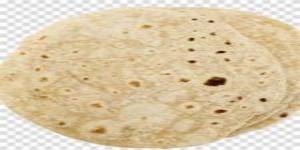
Fundamental Concepts and Principles
The primary ingredients in rotis/pancakes are stone ground flour, salt (optional), and water to form the dough. Rotis are made into savories with the use of jaggery, coconut, etc.
- ½ Padi Wheat Grits or Flour
- 1½ Palam Ghee
- ? Palam Salt
1. Mix the above ingredients well. Now add adequate water to make a uniform dough.
2. Keep the dough aside for 1 ½ hour. Take some dough, the size of a lemon, place it on a rolling board and roll the dough to make a roti, the size of a dosai (crepe) with half inch thickness.
3. Dust the wheat flour on the roller as well as on the dough before rolling to prevent it from sticking.
4. Place the pan on fire, made of either sand or stone or steel. Put the roti on the pan to cook.
5. Turn the pancake on the other side to cook, once it turns red or you can see bubbles appear on the pancake.
6. Follow the same steps for the rest of the dough.
7. You may use a rolling board or your palms to make the pancake. To make the pancake with your hands, use ghee on your palms to work with the dough. Alternatively, take 3-4 spoons of ghee and the same amount of water and apply it to both sides of the roti or pancake after it is cooked and taken off the pan.
8. This helps maintain the softness of the roti.
9. This roti can be eaten with any gravy, stew or dal (lentils). Spicy mango/banana paste(jam) also can be spread over the roti.
Method
A roti dough is rolled out into flat round, square or triangular shapes, and cooked on a flat or slightly concave iron (or clay) griddle called a tawa. There are also a variety of rotis made using a traditional Indian oven called the tandoor, especially in the state of Punjab, where the flattened dough is stuck to the inside wall of the tandoor, where it bakes quickly at a high temperature. In everyday life and homes, the roti rolled out is called chapati and is made of whole wheat flour mixed into dough with water, edible oil or ghee and optional salt in a mixing utensil called a parat, and is cooked on the tava. Variations of the chapati include the phulka (in Punjab, Maharashtra, Gujarat) and maani in Sindhi.
Some roti recipes do use a home-made souring process called khameer, as also buttermilk, yoghurt, etc., for variety and healthier options.
Hindu Compliance Body
The Hindu compliance body was established under the executive order of The Supreme Pontiff of Hinduism, dated August 14, 2020, order number 10010, under the title Reviving the Hindu Compliance System and Body
to create, promote, spread and teach the standard procedures for all products and services that are in compliance Hindu Shastras.
Copyright
HCS has the copyright of all its publications. No part of these publications may be reproduced in any form without the prior permission in writing to HCS. This does not preclude the free use, in the course of implementing standard, of necessary details mentioned above. Enquiries related to copyrights to be addressed to KAILASA.
